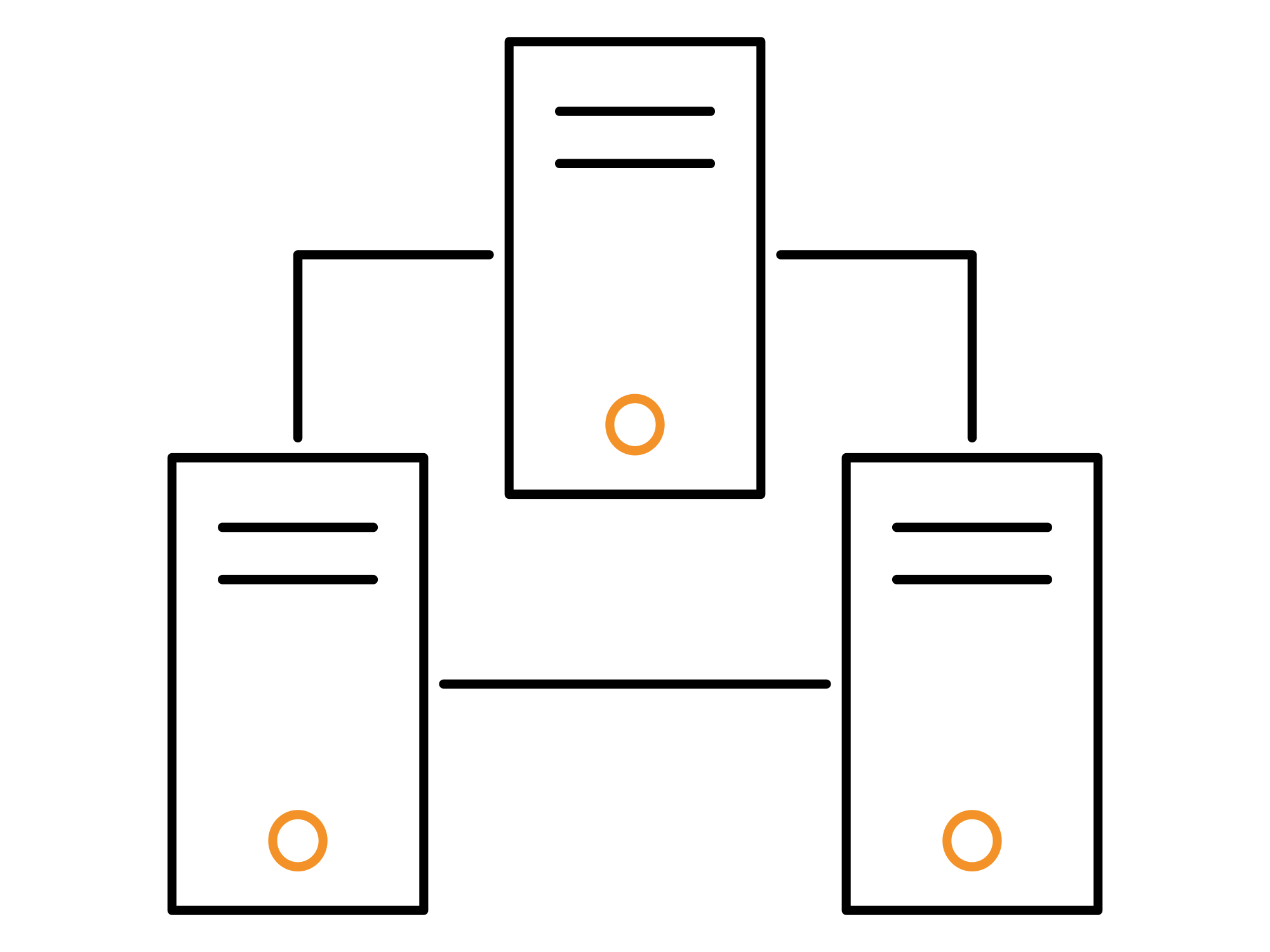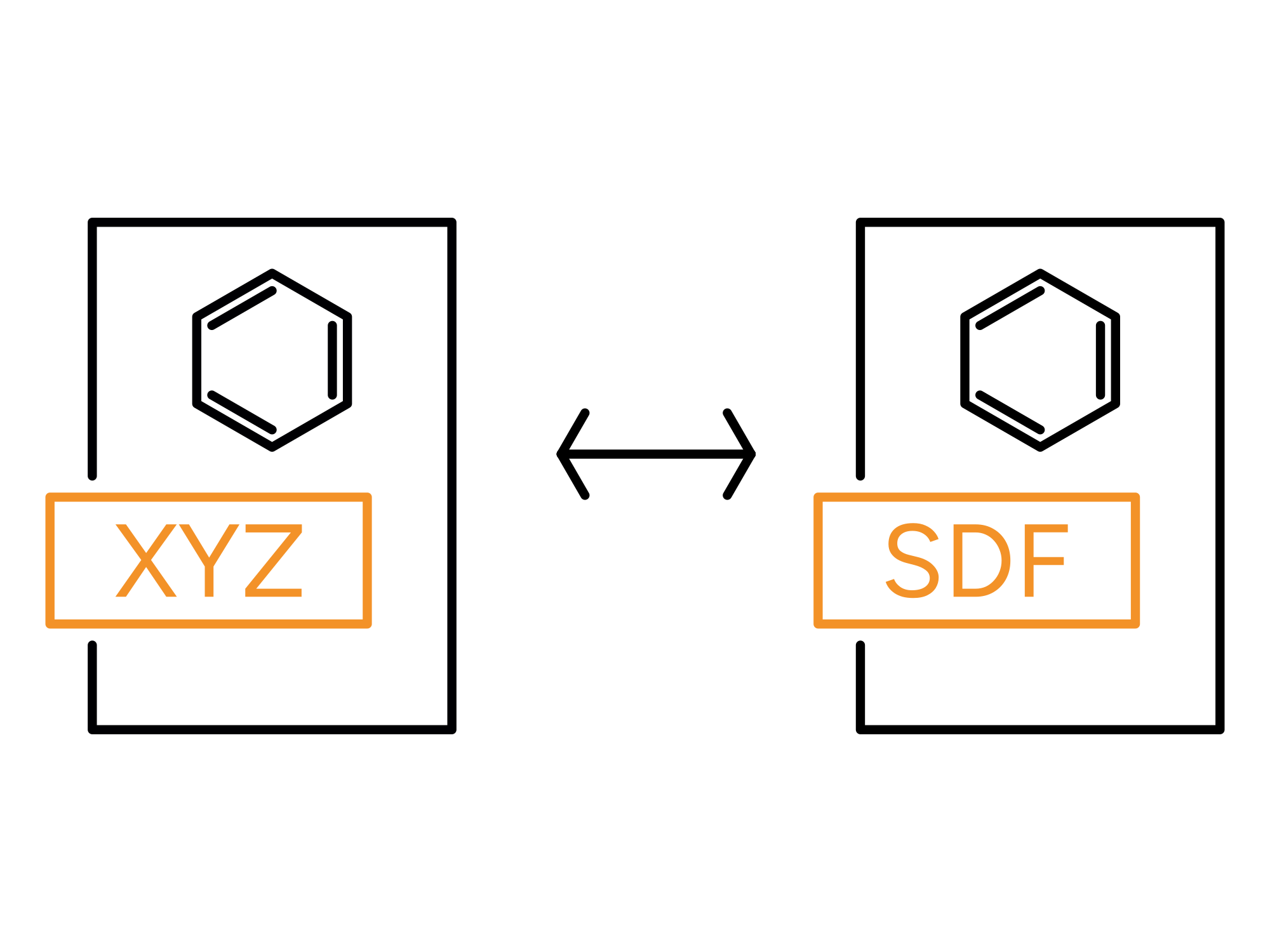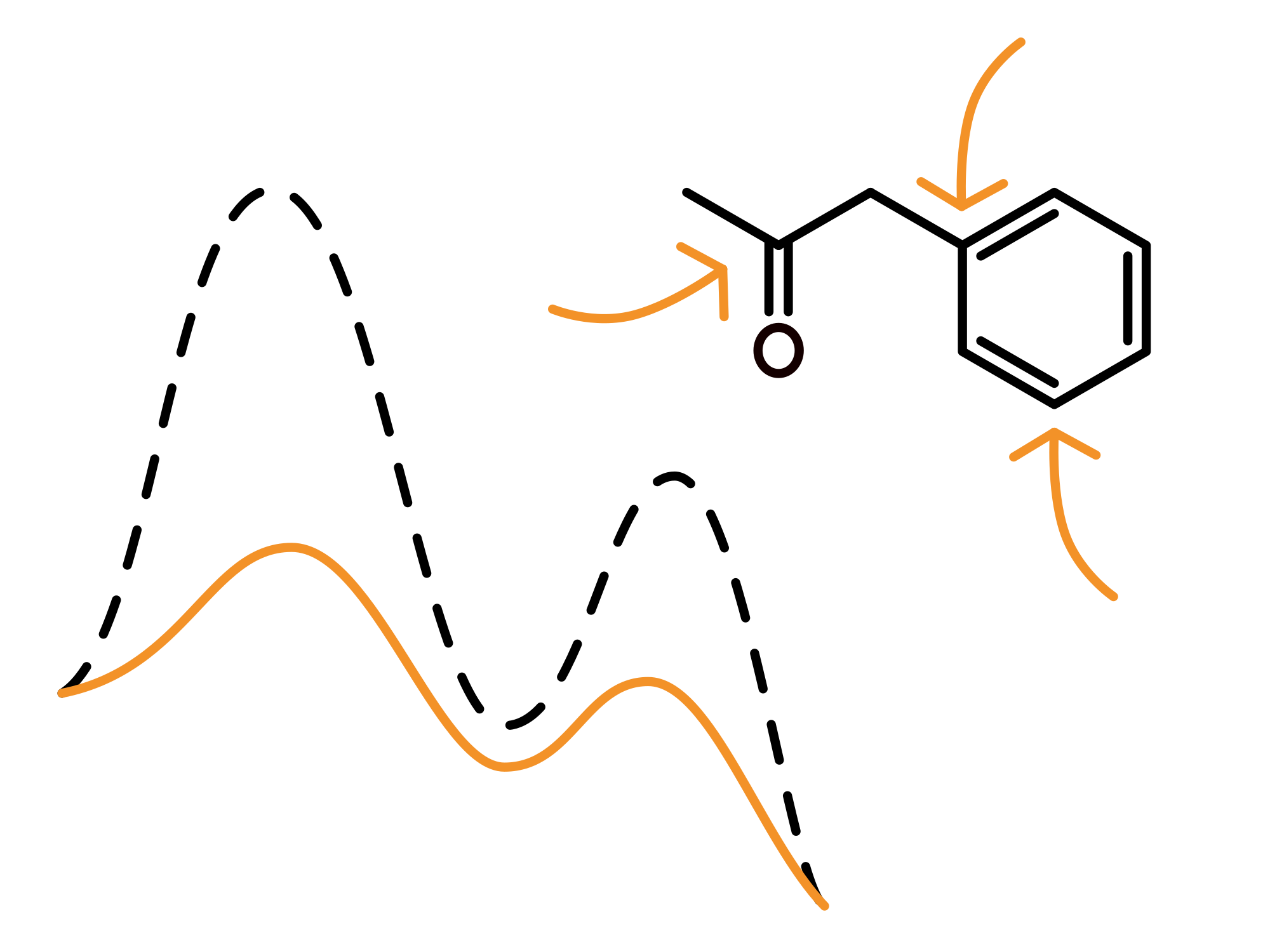Weasel
WEASEL is our smart workflow driver. It fully automates quantum chemical workflows, and is used by experts and non specialists alike. WEASEL’s feature development is driven by the needs of our industry users, and often in close collaboration with them.
Making quantum chemistry accessible
WEASEL is our solution to make accurate quantum chemical simulations accessible to anyone, be it computational chemistry expert, data scientist, or experimentalist. It performs complex sequences of calculations, checks and collects their results, all in a black box fashion, allowing you to focus on the actual chemistry.
Smart workflows
WEASEL comes with a large set of predefined workflows, which automate various tasks, such as conformational searches, predicting reactivity or realistic spectra, computing chemical descriptors for data science applications, and more.
Expert know-how
Choosing the right methods, basis sets and other settings for quantum chemical calculations is often difficult, confusing, but at the same time crucial for getting the right result for the right reason. We integrate this know-how into WEASEL’s standard workflows, which represent the best practices for each specific use case.
The settings are chosen based on recent literature, benchmark studies, and the expertise of our academic collaborators and advisory board, who share centuries of combined experience across many different fields of quantum chemistry.
Flexible & versatile
WEASEL uses best practice standard settings by default, but it is simple to customize the workflows to your specific needs and preferences. Furthermore, WEASEL supports various input and output formats, so it is easy to integrate into your company’s tool chain.
standard workflows
calculation success rate
CPU cores per job
Industry partners
Features
-
Quality Management

WEASEL automatically detects if an electronic structure is hard to converge, if initial structures are too far away from stationary points, and other problematic scenarios. It adapts the settings on-the-fly, in order to reliably deliver the expected results.
-
Efficient reporting

The results are stored at various levels of verbosity, depending on your needs. Report files are created for archiving purposes. Additionally, WEASEL collects important data in standardized machine-readable summary files.
-
Multi-node capabilities

WEASEL can run in parallel and across multiple nodes, using either the integrated or in-house OpenMPI libraries. Depending on type of the simulation and the size of the molecules, a single workflow might require hundreds to thousands of individual QM calculations. In such cases, hundreds of CPU cores can be used efficiently to speed up the computation.
-
Multiple file format support

Various different chemical structure formats are supported, including: XYZ, MOL2, SDF, PDB, MAE, SMILES. These formats can be used to provide input structures and store output structures and data. Single- as well as multi-structure files can be handled.
-
Reactivity Prediction

Various workflows for process chemistry applications are provided. For example, atomic or molecular reactivity descriptors of single molecular structures can be computed, but WEASEL also has efficient workflows to automatically predict reaction pathways, transition states, and lowest-energy conformers for small-to-medium sized molecular systems.
-
Spectrum Prediction

Realistic infrared, Raman, NMR, UV/Vis, and circular dichroism spectra can be predicted, which take into account the conformational flexibility of the molecule. This is often essential when trying to reproduce or assign an experimental spectrum.
-
AI applications

Data science projects can profit from various capabilities available in WEASEL. We provide workflows to generate molecular properties as well as atomic properties of all kinds, following scientific publications that have been suggested recently in AI-related projects.
Workflows
WEASEL uses sophisticated workflows to automatize complex computational tasks such as conformer ensemble optimization, spectra prediction, transition state sampling, and many more. All WEASEL workflows are based on years of experience and successful application in academic and industrial research and development. Therfore, WEASEL provides an unrivaled portfolio on efficient and robust defaults that are highly valued by our users that demand high industry standards. Below, some exemplary workflows available in WEASEL are highlighted.
-
UVVIS/CD Spectra
1. Conformer Ensemble Generation and Optimization
Flexible molecules can have a vast conformational space with hundreds to thousands of relevant conformers. WEASEL efficiently orchestrates the generation and optimization of conformer ensembles for any molecule.
2. Spectra Calculation
WEASEL utilizes ORCA to compute UVVIS and CD spectra and automatically applies Boltzmann weighting based on the generated conformer ensemble.
3. Reporting
All results and details of the calculations performed within the workflow are collected and reported in an efficient and accessible output featuring various output formats that can be analyzed with TOUCAN.
-
VCD Spectra
Vibrational Circular Dichroism (VCD) spectra are very sensitive towards structural and conformational influences. WEASEL offers an efficient workflow to predict VCD spectra, taking care of various essential aspects like conformational flexibility, solvation effects, energetic ranking including Gibbs free energy, and accuracy of the employed electronic structure methods. Our customers use this workflow in their daily assignment routines.
1. Conformer Ensemble Generation and Optimization
Flexible molecules can have a vast conformational space with hundreds to thousands of relevant conformers. WEASEL efficiently orchestrates the generation and optimization of conformer ensembles for any molecule.
2. Spectra Calculation
WEASEL utilizes ORCA to compute VCD and IR spectra and automatically applies Boltzmann weighting based on the generated conformer ensemble.
3. Reporting
All results and details of the calculations performed within the workflow are collected and reported in an efficient and accessible output featuring various output formats that can be analyzed with TOUCAN.
-
NMR Spectra
WEASEL offers an efficient workflow to predict Nuclear Magnetic Resonance (NMR) spectra for any kind of nucleus. It takes care of essential aspects like conformational flexibility, solvation effects, energetic ranking including Gibbs free energy, scalar-relativity, and accuracy of the employed electronic structure methods powered by our quantum chemistry program package ORCA.
1. Conformer Ensemble Generation and Optimization
Flexible molecules can have a vast conformational space with hundreds to thousands of relevant conformers. WEASEL efficiently orchestrates the generation and optimization of conformer ensembles for any molecule.
2. Spectra Calculation
WEASEL will utilize ORCA to automatically compute NMR chemical shifts and coupling-constants to predict Boltzmann weighted NMR spectra for the nuclei of choice.
3. Reporting
All results and details of the calculations performed within the workflow are collected and reported in an efficient and accessible output supporting various output formats.
-
Fukui Functions
Understanding the electronic structure of a molecules is key to predict its reactivity. WEASEL automatizes electronic structure analysis for Fukui functions to visualize electrophilic and nucleophilic sites in any molecule, and also stores the data in a structured representation suitable for machine learning applications.
1. Optimization
The input molecule is optimized.
2. Reduced and Oxidized Species
To obtain the Fukui functions, the electronic structure of the neutral, reduced and oxidized species are computed.
3. Fukui Functions
Finally, the Fukui functions are calculated and automatically visualized. The results of the Fukui analysis are reported in detail.
-
Tautomer Generation
WEASEL generates and identifies energetically relevant tautomers of any molecule with the freedom to include implicit or even explicit solvation effects into the workflow. WEASEL’s workflow uses sophisticated quantum mechanical methods, which yield accurate tautomer prediction, also for non-standard molecules, including metal-lingand complexes. The generated tautomers can then be coupled with any type of property prediction.
1. Tautomer Generation
WEASEL can automatically generate tautomers and its conformers for any molecule starting from simple input files.
2. Energetic Ranking
The generated tautomers efficiently sorted and ranked to identify the most stable candidates.
3. Reporting
All results and details of the calculations performed within the workflow are collected and reported in an efficient and accessible output supporting various output formats.
-
Reactivity
WEASEL enables the computation of reaction profiles by optimizing reactants and products and automatically locating the respective transition stateand reaction path to calculate accurate reaction energetics.
1. Optimization of Reactants and Products
WEASEL utilizes ORCA to optimize the input reactants and products to prepare for automated transition state localization.
2. Transition State Localization and Optimization
The transition state connecting reactants and products is automatically localized and optimized using ORCA and its robust NEB-TS scheme. Reaction and activation free energies are calculated and reported.
3. Reporting
All results and details of the calculations performed within the workflow are collected and reported in an efficient and accessible output supporting various output formats.
-
Host-Guest LED
WEASEL offers an automated workflow to analyze intermolecular interactions to the last detail utilizing the Local Energy Decomposition (LED) approach and its covalent variant COVALED implemented in ORCA.
1. Optimization
Based on the user definition of the interacting molecules, WEASEL automatically optimizes the complex and the interacting molecules, e.g., host and guest molecules.
2. Automatic Fragmentation
WEASEL automatically fragments the interacting molecules into chemically meaningful fragments no matter of size or complexity.
3. Interaction Energy Analysis
The interaction between all defined fragments is analyzed utilizing Local Energy Decomposition. All interaction energies are decomposed into physically meaningful contributions allowing for a detailed insight into their strength and nature. For convenience, interaction energy maps are generated for easy visual insight.
-
IM-CCS
WEASEL can automatically determine Ion-Mobility-Collision-Cross-Sections (IM-CCS) for any molecule. It will automatically take care of the ionization procedure and structural flexibility.
1. Ionization and Conformer Generation
WEASEL automaticall (de-)protonates the molecule and generates the respective conformer ensemble.
2. CCS Simulation
Molecular dynamics simulations are automatically performed to calculate the IM-CCS.
Get in touch
If you are interested in our products or services, please send us a message and we will get back to you.
CONTACT US